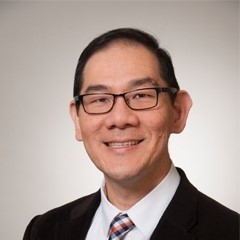Encompassing 240 beds across multiple care units, VA Bedford is one of the largest long-term care facilities in the VA healthcare system. Normally the geriatrics rotation at VA Bedford took place on the Geriatrics Evaluation and Management Unit, a 24-bed inpatient subacute rehabilitation and skilled nursing unit specifically designed to manage older Veteran patients in need of post-acute or community-dwelling veterans in need of complex geriatrics care.
Prior to the pandemic onset, residents came from 3 internal medicine and family medicine residency programs and rotated on two- or four-week blocks. Two residents, working under the supervision of an attending physician, are typically on rotation at any one time. To fulfill geriatrics training requirements, the residents participated in patient care and regularly structured didactic, active-learning, and self-directed experiences.
We thus sought to maintain a core geriatrics education program while adhering to restrictions imposed by the need to minimize exposure and transmission of SARS-CoV-2, the causative agent of COVID-19. From the onset of the pandemic in March 2020 until October 2020, several months following a surge in the U.S. Northeast, we converted the geriatrics rotation at VA Bedford to a fully virtual non-clinical GME experience.
Our overarching goal was to deploy the original curriculum, including its learning objectives and provided educational resources, virtually so that even with COVID-19 restrictions residents could complete the rotation with core tools needed to care for older adults. The topics covered fell under the major themes of geriatric syndromes, comprehensive geriatric assessment, and serious illness and end of life conversations.
We structured the rotation as much as an intensive graduate course as a clinical rotation, with the expectation that the resident would put in vigorous effort to engage with the material. We provided an orientation packet that detailed the curriculum, a robust set of educational resources, a guide for self-directed learning, and a schedule of daily learning activities, all accessible either on a shared website or in a physical binder. Learning sessions were typically conducted via video conferencing using secure Skype or Microsoft Teams platforms. Both have features that enable video conferencing and include a range of built-in tools that allow for screen sharing, file sharing, breakout rooms, and slide presentations. These video communication platforms created an interactive virtual environment that enhanced engagement between the instructor and learners.
On most days we expected residents to create a short write-up or give a virtual “chalk talk” on one of the assigned core topics, to be discussed with the attending or invited faculty. Other learning activities included journal clubs, case conferences, attending-facilitated presentations, small-group discussions, role-plays, weekly sessions with a senior resident on their neurocognitive disorders rotation at VA Bedford, talks from geriatrics fellows, and online Geriatrics Grand Rounds. Each morning we messaged out a geriatrics “question of the day” to prepare learners for and to facilitate a rapid exchange of ideas on the day’s topic. Each afternoon, residents joined a conference call with the teaching faculty to review and clarify concepts learned. We did not expect residents to participate when they would normally have been off-service.
We sought preliminary, qualitative resident feedback, taking a Plan-Do-Study-Act approach to iteratively improve the rotation after each block. As examples, we clarified our methods, expectations, and means of supervision, including writing specific learning objectives, increasing the frequency of educational “deliverables,” and scheduling regular meeting times. We intended for the last to allow clinicians time to attend to patient care responsibilities while ensuring that residents remained engaged with assignments and deliverables. Having administrative support for scheduling and troubleshooting was important.
The experience was generally well received, with positive responses regarding the rotation’s structure, breadth of topics, articles, didactics, and case discussions. Commenting on “most useful” aspects, one resident’s response was typical: “I thought the learning that we had every morning about different geriatric syndromes was useful, and I'm hoping to apply them to some of the older patients we see moving forward. The journal clubs were both very informative, and both were run really well. The way the schedule was set up, with morning learning and afternoon discussion about what we learned in the morning, was also great.” When given the option of having the curriculum and articles available on a shared website versus a physical binder, the residents preferred the latter containing the material they could refer to after the rotation ended.
This curriculum can be replicated at other institutions where in-person encounters are limited by pandemic restrictions or other reasons. The approach may be appropriate for students as well as residents. Instructors may modify the topics included according to local need and teaching expertise. Notwithstanding case-based discussions, the lack of actual patient care limited competency-based medical education beyond the domain of “medical knowledge.” This could be rectified by incorporating remote telehealth encounters, which would require access to mobile communication devices, a robust internet connection, and support personnel for successful implementation. As a next step, we intend to evaluate the efficacy of and further improve the core curriculum across several geriatrics competencies.
How have you transitioned curricula to the virtual environment? Comment below and join the conversation.
Did you know that the Harvard Macy Institute Community Blog has had more than 290 posts? Previous blog posts have explored topics including engaging students virtually, training with mental practice during COVID-19, and being together, when apart.
Author BIO's

Lionel Lim, MBBS, MPH (Educators, ‘21) is a medical educator and geriatrician. Lionel is currently Site Director for Internal Medicine and Geriatrics at the VA Bedford Healthcare System in Bedford, MA. Lionel’s areas of professional interest include postgraduate medical resident and fellow training in geriatrics, postacute care management and palliative care. Lionel can be followed on Twitter or LinkedIn.

James Meisel, MD, MHPE (Educators, ’99; Leaders, ’01; Systems, ’15) is a health professions educator and internist. Jim is currently Associate Chief of Staff for Education at the VA Bedford Healthcare System and Associate Professor of Medicine at Boston University School of Medicine. His areas of professional interest include innovative approaches to teaching geriatrics and bedside cardiac assessment, professional development, and instructional design in health professions education. Jim can be contacted via email.
HMI Staff


